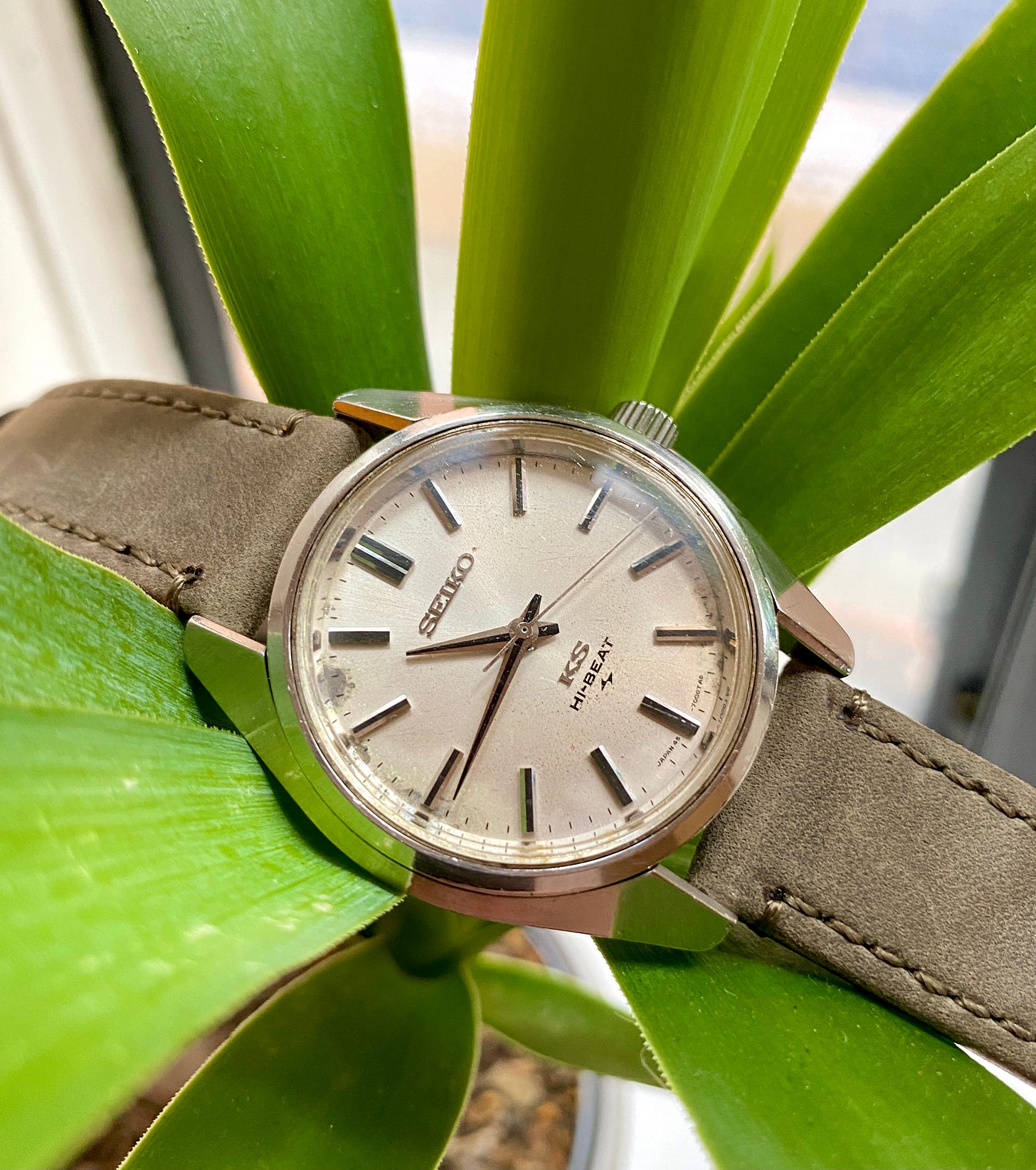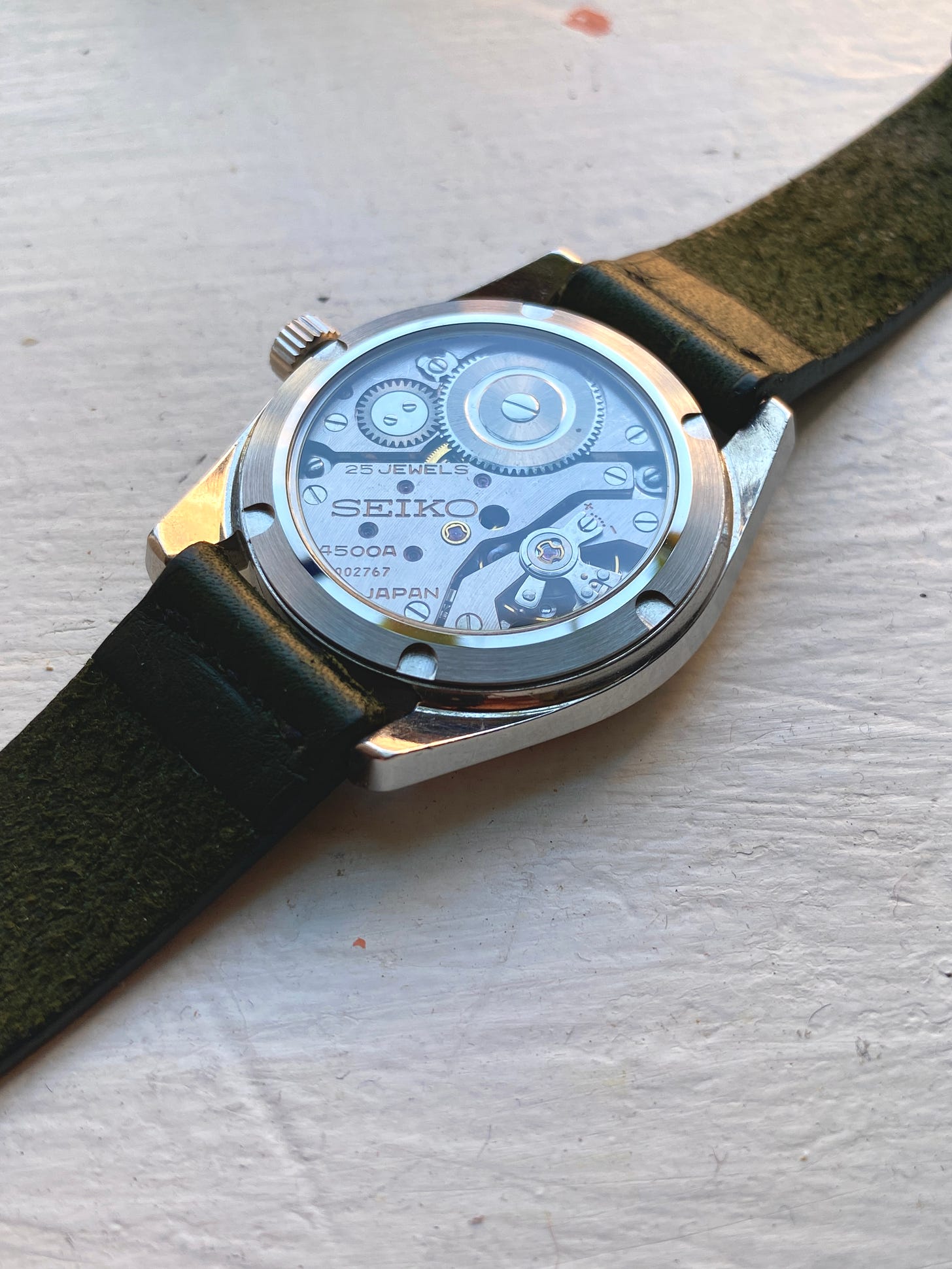When I heard that Seiko was reviving the King Seiko reference line in 2020 for their 140th Anniversary, I was beyond ecstatic. King Seiko has been my favorite vintage zip code for years, with an unbeatable combination of significant design language and movement superiority. Even 56 years later, my own 45-7000 King Seiko has a look that holds its own and a movement that boasts better accuracy than the majority of my modern watches - last I timed it, this hand-assembled vintage movement was clocking in at +1 second per day. ONE SECOND PER DAY. Absolutely insane regardless of age. I love my King Seiko and hoped for quite a while that Seiko would hear of the growing enthusiasm for these pieces of history and maybe, just maybe, revive the line with something that would do the olden day watchmakers proud.
King Seiko was indeed revived. King Seiko did indeed look great. King Seiko was given the wrong movement. And that’s not an opinion; I’m putting my foot down and claiming it as fact.
This article may feel a year or two late to some of you, and I see where you’d be coming from, but I was so let down by the movement choice for the KS rebirth that I thought it must surely just be a temporary choice. Maybe Seiko wanted to test the waters for King Seiko before going hard in the paint? Maybe there was another movement in production, perhaps a recreation of a vintage handwound 45-7000 from the 60s, to be used in a later release? Or a reworking of a modern Grand Seiko Hi-Beat movement to fit into a thinner case? Or maybe throw everyone for a loop and bring back the King Quartz movement? I tried to reserve judgement to see what the next move would be and hope for the best.
Hopes dashed. Disappointment confirmed. Every reference of the newer King Seiko line has a regular old Seiko movement inside. First there was the 6L35, which is fine enough, and then came the 6R31, which is slightly less fine, and now the 6R55, which is good, but in this context, just meh. All are overall solid movements, with the 6L35 beating at or around a respectable 28,800 vph and the 6Rs at 21,600 vph (vibrations per hour), and their tolerances (+/- 15, +/- 25, +/- 25 seconds per day respectively) are far from the worst in the Seiko catalog and broader watch industry. But King Seiko’s legacy wasn’t built on okay timekeeping; it was the internal challenger line to Grand Seiko, utilizing some of the most accurate, innovative, and even beautiful movements that Seiko has ever produced. In their quest to upend the Swiss at their own game, Seiko’s competing factories of King Seiko and Grand Seiko pushed each other to create Japan’s best watches and watchmaking innovations. It wouldn’t be so much of a stretch to say that the strides made by Seiko during their King Seiko vs. Grand Seiko days directly led - eventually - to the creation of the Spring Drive movement in the pursuit of perfect timekeeping. To have an average, mid-tier movement in a King Seiko feels akin to dropping a Toyota Corolla engine into a Porsche 911 R; no slight against the Corolla and its dependability, but the engine it brings is not in the same performance league as that of the 911 and would leave so much to be desired. This might seem like an apples to oranges comparison, but that’s exactly how the 6L and 6R movements feel when dropped into a King Seiko.
Not really sure which is the apple and which is the orange, but you get the idea.
To be fair, the new King Seiko references look wonderful. The case is sharp and well-proportioned, the dials are intricate and lively, and the hands are the classic sharp Seiko swords. Plus, there’s even an engraving of the King Seiko shield on the caseback, which, though it isn’t a gold medallion (except for the 140th reference), is a nice touch. And there’s also the argument to be made that the very first King Seiko references utilized movements beating at “only” (in quotes because for the ‘60s, it was excellent) 18,000 vph. But for what these watches cost ($1500-3400 or thereabouts, depending on where you look), the movement should at least be comparable to what we can find in a good vintage model for 1/8 the price, especially because of what the eventual movement innovations of King Seiko would mean to broader Seiko and Grand Seiko watchmaking. Vintage King Seiko can still be found, in good condition and serviced, within the $300-800 price range. That’s incredible value for the real deal. The new line’s not bad, but it leaves so much potential on the table at its current price point.
Had Seiko put these movements in a reincarnation of, say, the Lord Matic series, I would have exactly zero negative comments. Mid-range, robust movements would work well in watch lines formerly meant to be for the everyday person, the business person, the working person, the person-person; King Seiko, on the other hand, was meant to push into that next tier of watchmaking, and what lived under the hood represented that just as much, if not more than, what could be seen on the dial or case.
I don’t like to complain without offering a prospective solution, so if I were in those creative team meetings at Seiko, here’s what I would propose:
A four watch tandem release modeled after the 45-7000 and 5625-7000 references - two for each reference - with the two new 45KS being manual winding only, the two new 56KS being automatic and hand winding; the former two being time only, the latter two including a date complication; each pair including one in a silver dial and one in a black dial (sunburst if we’re being picky). The 45KS movement should stay true to its origin and beat at 36,000 vph, and while the 56KS would have been a slightly more modest 28,800, I would bump that up to 36,000 for a modern recreation (though I wouldn’t be mad with 28,800 despite my accuracy gripes with the 6L35). These are true high-accuracy, hi-beat specs, and would immediately make the new King Seiko a deeper cut in its own horological history. I’d then include the gold medallion in the caseback, like the vintage models and not just for anniversary pieces, and from there, everything else for the modern KS examples can stay the same. As I mentioned, the dials are great, especially the tortoise and linen…oh and the purple too:

In addition, the proportions are excellent (37-39mm cases, close to/true to vintage), and the bracelets that now come with a King Seiko are well made and visually appealing. The leather straps look wonderful as well. Even the price is understandable given the history of King Seiko and the overall quality, but for it to be truly justified…
…the new King Seiko references just have to have a better movement.
As always, wherever you are, and wherever you’re going, many thanks for stopping by. If you’re not already subscribed, it’d be great to have you here more often!









